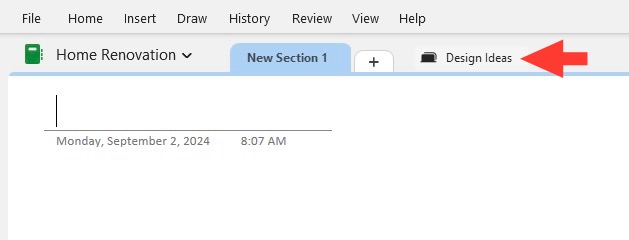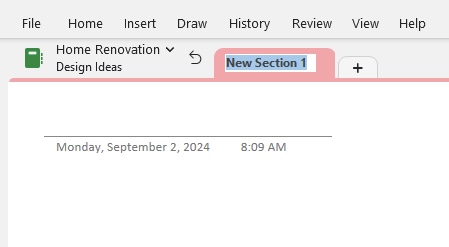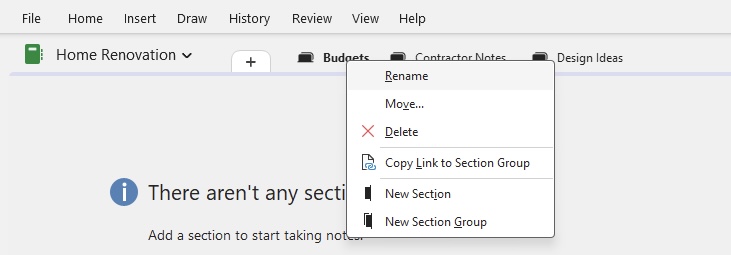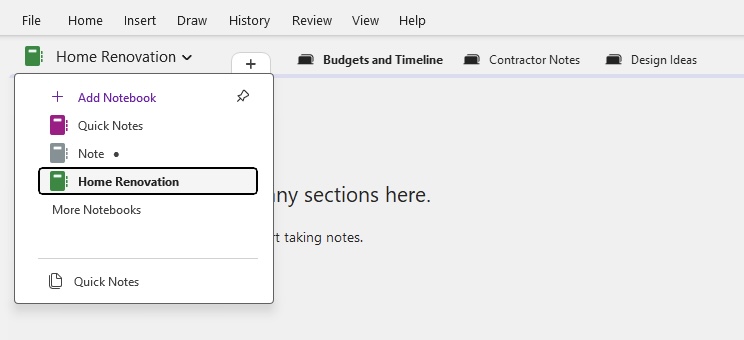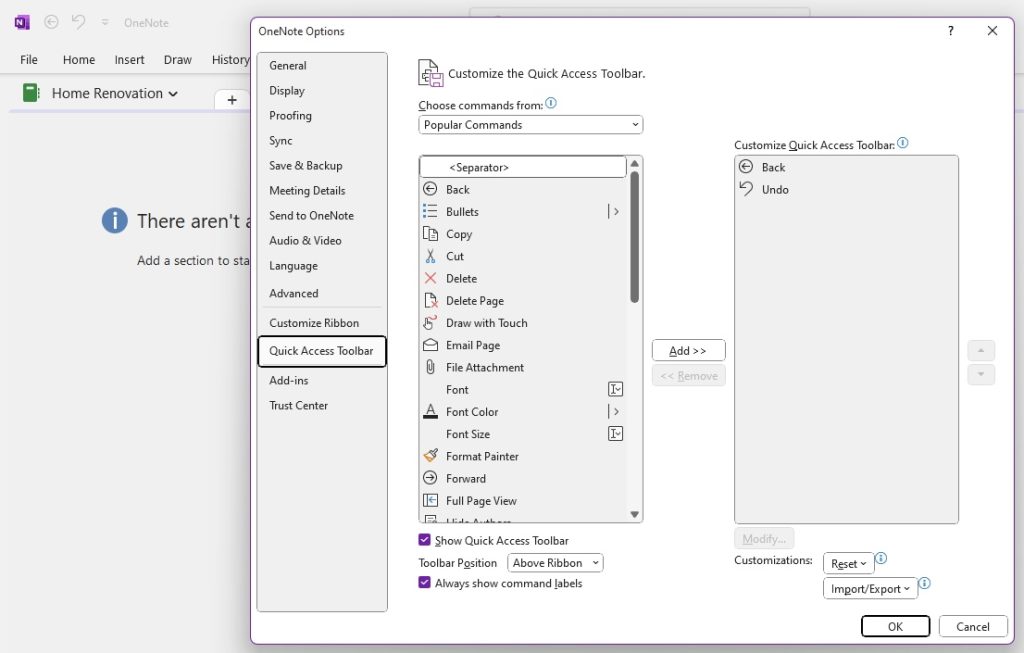OneNote can be a real game-changer for both personal and professional note-taking. As a new user, I find its intuitive interface quite approachable. Here’s a snapshot of its fundamentals: OneNote is laid out like a digital version of a physical notebook, complete with the ability to create various notebooks for different subjects or projects. Each notebook consists of sections, and within those, we can create individual pages. It’s a breeze to type in notes, insert media from other apps, and even scribble or sketch if the device supports pen input. With OneNote, all the notes I take are automatically saved and synced across devices, which means accessibility from anywhere, anytime.
Key Takeaways
- To create folders in OneNote, navigate to the desired location such as a student resource folder, select “New” followed by “OneNote Notebook,” name your notebook, and then click “Create.”
- Organize your OneNote content by adding new sections and pages; to add them, click on “Add Section” or “Add Page” at the bottom of the sections or pages list respectively.
- For advanced organization within OneNote, consider using section groups to keep related sections together; create a section group by right-clicking the section area and choosing the option to create a new section group.
The Importance of an Organized Note-Taking Structure
An organized note-taking structure can mean the difference between chaos and clarity, especially when managing an abundance of information. I’ve observed that organization not only helps me retain information more effectively but also saves me significant time when reviewing or searching for specific notes. Establishing a logical hierarchy makes it possible to sort, prioritize, and access data swiftly. Especially in academic or professional settings, where multiple projects or subjects demand attention, the right organizational system can help ensure nothing gets overlooked. Furthermore, a neat structure supports mental clarity and can even reduce stress, as I know exactly where to find the notes I need without sifting through a jumble of information.
Table of Contents
Getting Started with Folders and Section Groups in OneNote
Understanding the Difference Between Folders and Section Groups
Comparing folders in traditional file systems to section groups in OneNote reveals some similarities but also key differences. We traditionally think of folders as a way to cluster related documents within a filesystem on our computer. They’re like the digital equivalent of paper folders, each holding a discrete collection of files.
In OneNote, section groups serve a similar purpose to folders but exist within the framework of a digital notebook. They allow me to group related sections under a common umbrella within a single notebook. For instance, if I’m using OneNote for a broad project like “Home Renovation,” I could create section groups for “Budgets,” “Design Ideas,” “Contractor Notes,” and more. Each of these section groups can then contain individual sections related to their topic, while sections hold individual pages of notes.
The critical difference is the hierarchy and functionality. While folders can contain a variety of file types and deep sub-folder structures, OneNote’s section groups are designed specifically for organizing notes and pages within the OneNote ecosystem, streamlining the process of categorization within the context of note-taking.
Step-by-Step: Creating Your First Section Group
Creating a section group in OneNote can significantly enhance your organizational prowess. Allow me to guide you through the process:
STEP 1: Open OneNote and navigate to the notebook where you want to start organizing.
STEP 2: Right-click in the blank space next to the current sections. This typically can be found along the top bar in OneNote.
STEP 3: Select “New Section Group” from the context menu that appears.
STEP 4: Immediately, you’ll see a new group formation. Begin typing to name your section group promptly; label it in a way that best reflects the contents you plan to include.
STEP 5: Congratulations! You’ve created your section group. Now, to add sections, simply click on your newly created section group and select “Add Section” from within the grouped section.
STEP 6: If desired, drag existing section tabs straight over the section group icon to include them under this umbrella.
Remember, section groups are meant to streamline your note-taking process and can be tailored to match your unique organizational style. The ability to create sub-sections within these groups can further enhance the navigability of your notebooks.
Managing and Navigating Section Groups Effectively
Renaming and Rearranging Your Section Groups for Maximum Efficiency
To maintain peak efficiency within OneNote, renaming and rearranging section groups as your project evolves is quite essential. This flexibility reflects the dynamic nature of work and study projects. Here’s how I manage it:
To rename a section group, simply right-click (or tap and hold) on the section group’s name, then select “Rename.” Type the new name, and press Enter. This allows me to accurately reflect the current content or project phase.
Rearranging section groups is just as straightforward. I can click and drag the section group to a new position within the notebook’s navigation pane, effectively reordering them to match my workflow priorities. If I prefer them to be in alphabetical order, project timeline sequence, or any other system that suits my working style, it’s just a matter of drag-and-drop.
Remember to periodically review and adjust your organization structure. This aligns your OneNote environment with the current state of your projects, ensuring that the most relevant information is always readily accessible.
Tips and Tricks for Quick Navigation Across Numerous Section Groups
When working with a multitude of section groups in OneNote, quick navigation becomes crucial. Here are some tips and tricks I’ve learned to move around swiftly:
- Utilize the Navigation Pane: Toggling the Navigation Pane to display all notebooks and their corresponding section groups offers a clear view of my organizational structure.
- Keyboard Shortcuts: I often use keyboard shortcuts, such as
Ctrl+Gto navigate to a specific section group. - Collapse and Expand: To reduce clutter, I collapse section groups not currently in use, which can be especially helpful when dealing with numerous groups.
- Quick Access Toolbar: I customize the Quick Access Toolbar with navigation buttons for speedy movement between frequently used section groups and pages.
- Linking Within OneNote: Linking pages and sections within my notes is a powerful trick. It works like hyperlinks on web pages, enabling me to jump to related content instantly.
Consistent use of these strategies saves me valuable time when navigating complex notebooks, and keeps my focus sharp on the content rather than how to find it.
Merging Traditional Folder Utility with OneNote’s Flexibility
How Section Groups Can Act as Virtual Folders
Section groups in OneNote can be a real powerhouse, acting as virtual folders that help me manage content with finesse. Just like a folder that contains various documents, a section group contains various sections. This structural alignment allows me to categorize my notes just as I would files on my computer, bringing the familiarity of traditional organization into the digital note-taking realm.
With section groups, I find it efficient to cluster related topics or projects, making it simpler to locate specific notes. For example, under a “Market Research” section group, I may have individual sections for “Surveys,” “Interviews,” and “Competitive Analysis.” This virtual folder system offers me a multi-dimensional view of related content, which is less cumbersome than flipping through a stack of paper folders or navigating a hierarchy of digital directories.
Organizing Notes by Topic, Project, or Date within Section Groups
Organizing notes in OneNote by topic, project, or date within section groups is an efficient approach to maintain an orderly notebook. When I categorize notes by topic, I create a separate section group for each broad subject area. This allows me to compartmentalize my notes, making them quickly accessible when I need to dive deep into a subject.
For project-based organization, each section group represents a different project, allowing me to keep all relevant notes, research, and resources in one centralized location. This method is particularly helpful for tracking progress and maintaining focus on specific objectives.
When organizing by date, I set up section groups to represent time periods, such as months or quarters. Within these, sections can be further divided by weeks or specific dates, which is essential for historical referencing and progress tracking.
Maintaining a Clean Workspace Within OneNote
Best Practices for Digital Note-Keeping Hygiene in OneNote
Maintaining digital note-keeping hygiene in OneNote ensures that my work stays organized and efficient. Here are some best practices I adhere to for keeping my digital workspace tidy:
- Regular Review and Cleanup: I schedule time to review my notebooks and clear out notes that are no longer relevant or have become obsolete.
- Consistent Naming Conventions: By using a clear and consistent naming convention for notebooks, section groups, and pages, I ensure quick and easy identification and retrieval of information.
- Archiving: Notes that are important but no longer actively used can be moved to an archive section group, keeping my active workspace uncluttered.
- Use of Tags and Search Features: I tag important notes and use the powerful search feature in OneNote to find what I need quickly, reducing the need to sift through information manually.
- Limiting Notebook Quantity: While it’s tempting to create many notebooks, I try to limit the number I have active to prevent overwhelm and fragmentation of information.
Implementing these methods has allowed me to keep a pristine and efficient note-taking environment, which in turn enhances my productivity.
FAQ: Expert Solutions to Common Section Group Queries
How Do I Create a New Section Group in OneNote?
To create a new section group in OneNote, right-click on any section tab, then select “New Section Group.” Name the group to suit your organizational preferences, and press Enter to finish. It’s a straightforward process designed for quick and easy categorization of your notes.
Is It Possible to Convert Regular OneNote Sections into a Section Group?
Yes, it’s possible to convert regular OneNote sections into a section group. Simply create a new section group and then drag your existing sections into it. This keeps all your pages intact and instantly restructures your notebook for better organization.
Can Section Groups Be Shared Independently from the Rest of the Notebook?
Currently, sharing section groups independently from the rest of the OneNote notebook is not possible. When you share a OneNote notebook, all of its content, including all section groups, becomes accessible to the collaborators. If you need to share specific sections only, consider moving them to a separate notebook that you can then share.
What Should I Do If My OneNote Section Groups Become Unmanageable?
If your OneNote section groups become unmanageable, I recommend taking a step back to re-evaluate your organizational structure. Consider archiving old or infrequently used section groups, consolidating sections that can be grouped together, or splitting overly large section groups into more manageable ones. Remember that simplicity and ease of access are key; don’t hesitate to re-organize if it helps clear the clutter.
John Michaloudis is a former accountant and finance analyst at General Electric, a Microsoft MVP since 2020, an Amazon #1 bestselling author of 4 Microsoft Excel books and teacher of Microsoft Excel & Office over at his flagship MyExcelOnline Academy Online Course.


